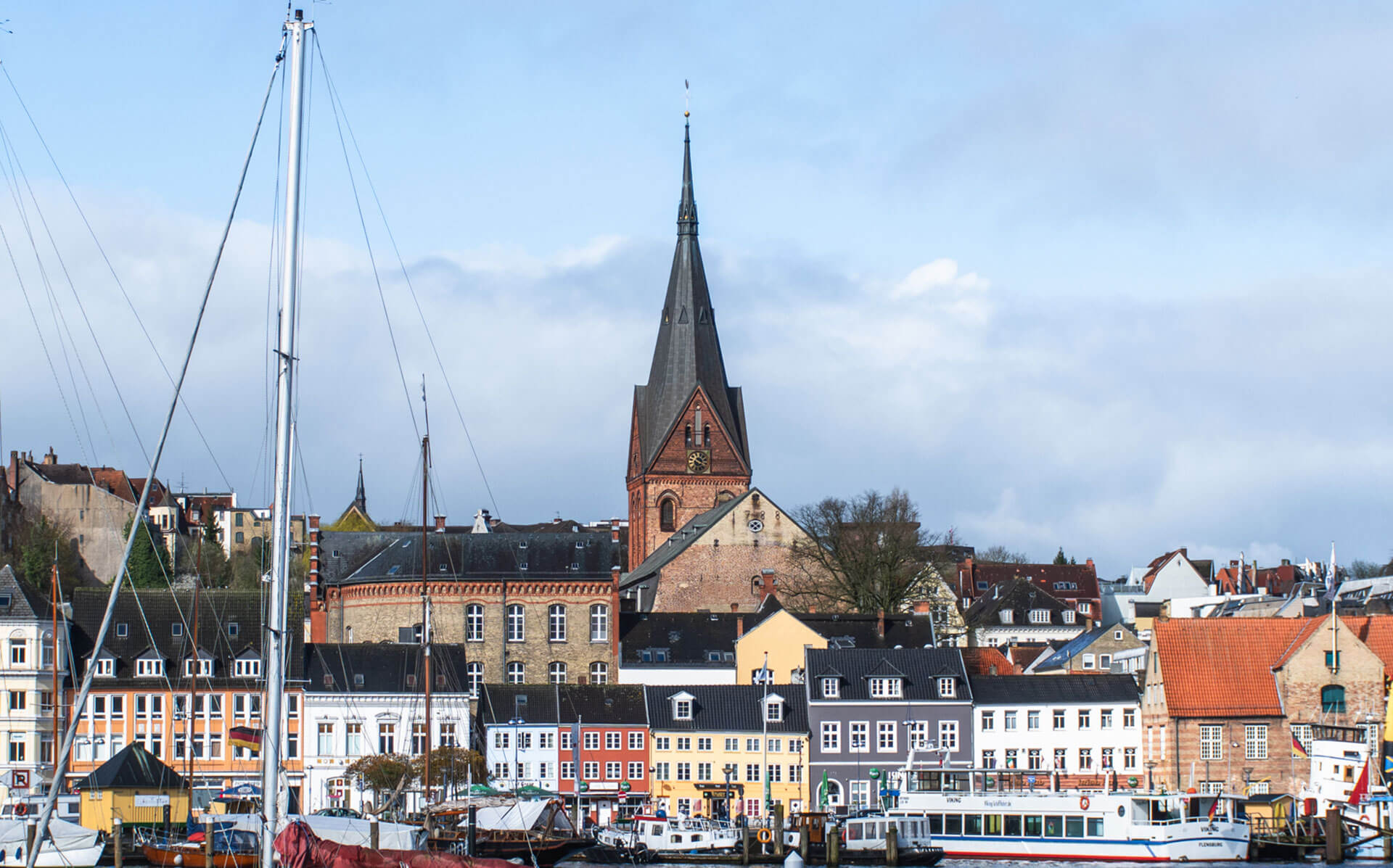Schleswig is a small town located in the northern part of Germany. Although the town is popular with tourists for several reasons (especially in the summer), we had never really thought of it as a destination for an outing. But one cold and slightly dark day in February, we decided to take a chance and drive down there.
Schleswig is about 45 km from the Danish-German border, so it’s not very far from where we live. The drive was partly an experiment to see how much my leg could handle (I struggle with CRPS in my leg), while also giving us the joy of crossing the border for the first time in almost two years.
I managed the trip fairly well, though with some consequences in the following days. But just getting a bit beyond Denmark’s borders made us feel like the world was starting to open up again – and the dreams of travelling began to return.
What can you experience in Schleswig?
There’s no doubt that Schleswig is a town best visited in the summer. All around the old town, we could sense how beautiful and lively the place must be when the sun is shining, with flowers in bloom and green leaves on the trees. In fact, it must be quite idyllic in summer. But even if you visit in winter, you can still find a bit of adventure in the town.
Here are a handful of reasons why you should also consider a micro adventure in Schleswig:
The Old Town of Schleswig
Schleswig isn’t very large. It has around 24,000 inhabitants, and when you drive into the town, you quickly get a sense of its size and position in the region. The town is inland, but at the end of a fjord, so it also has its own harbor.
On this February day, we set out to explore the old town – and we didn’t regret it. Even though it’s not very big, the old town is incredibly charming.
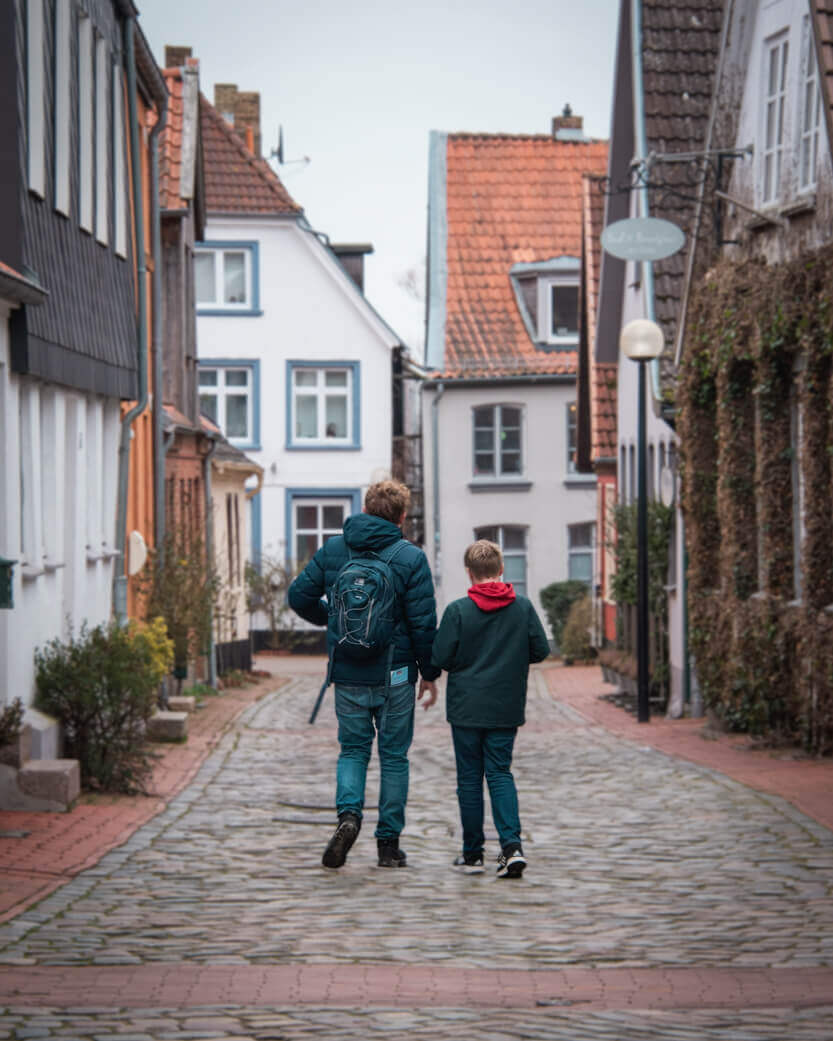
Gottorf Castle Museum
Before we turned into Schleswig, we noticed a very beautiful and very large castle on our right. We quickly agreed that we had to go and take a closer look.
It turned out that the castle is a museum with a long and fascinating history, dating all the way back to the 12th century, when it was originally built as a fortress.
In the 17th century, the castle was expanded and rebuilt for the Dukes of Gottorf. It became an important cultural center and a gathering place for many famous artworks, collections, and scientific discoveries. Among the most renowned scientists who worked at Gottorf were Tycho Brahe and his assistant, Johannes Kepler.
Today, the castle is said to be an impressive museum, showcasing the region’s extensive art and cultural heritage. The museum is divided into several sections, including an art and cultural history collection, an archaeological collection, and a natural history collection.
The castle was closed on the day we visited, so we didn’t get to experience the museum inside, but it looked beautiful from the outside.
The Town Hall and Graukloster
In the old town of Schleswig, you’ll find the town’s Town Hall (not surprisingly). What did surprise us, however, was that the Town Hall is attached to a medieval monastery, the Grey Monastery. The monastery was built in 1232 and was originally intended to serve as an old royal estate, commissioned by Valdemar the Great and Duke Abel.
During the Reformation, the monastery was taken over by the town and converted into the Town Hall – hence the connection. It’s impressive and fascinating from the outside, and likely worth a visit inside as well.
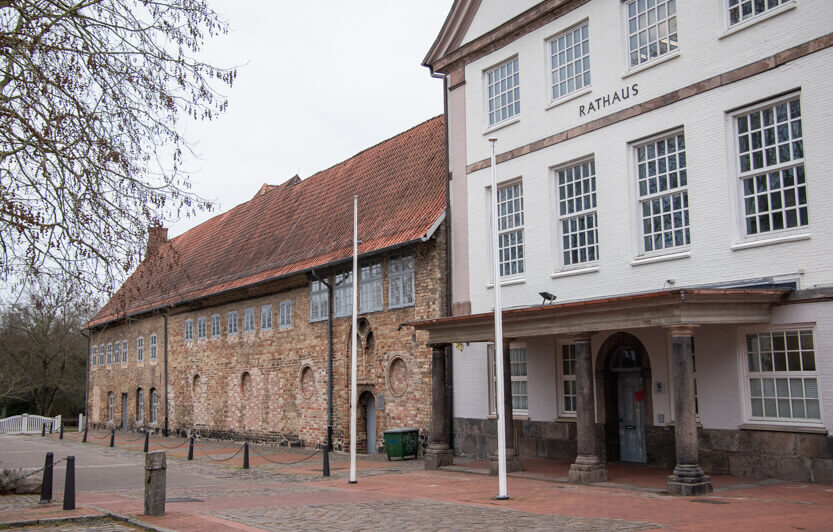
St. Peter’s Cathedral
One of the most remarkable buildings we noticed when we arrived in Schleswig was St. Peter’s Cathedral. The cathedral sits on a hill overlooking the town. Its bell tower rises high into the sky and can be seen from afar. The cathedral itself is definitely worth a visit.
The cathedral has a long and rich history, dating back to the 11th century when it was founded by the Danish king, Svend Estridsen. Numerous renovations over the centuries have created a unique blend of styles and architecture, reflecting the many historical lives it has witnessed.
The church is also known for its numerous artworks and decorations, as well as historic graves and monuments, including those of several Danish and German kings and queens. Among the most notable are the graves of King Christian III and his queen, Dorothea, who ruled over Denmark and Norway in the 16th century.
Where to Eat in Schleswig?
During our tour of Schleswig’s old town, we noticed that there were several restaurants and cafés. Unfortunately, most of them were closed for the winter season, but luckily we found a lovely restaurant where we enjoyed a wonderful lunch.
The restaurant, Restaurant Luzifer, is located just outside the old town, on the road leading to the castle. It’s housed in what appears to be an old industrial building, and with the large brewing vats inside, we assume it once functioned as a brewery. We haven’t been able to find much information about the restaurant, but it’s definitely the place we’ll eat the next time we visit the town.
Restaurant Luzifer
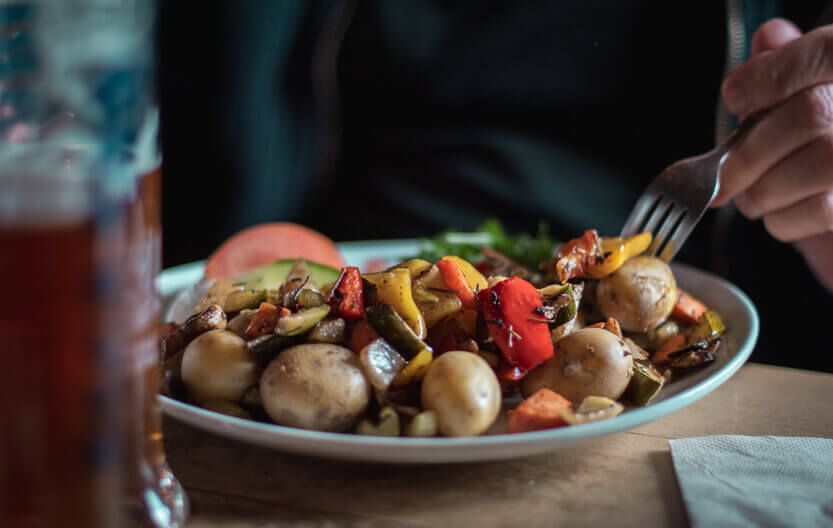
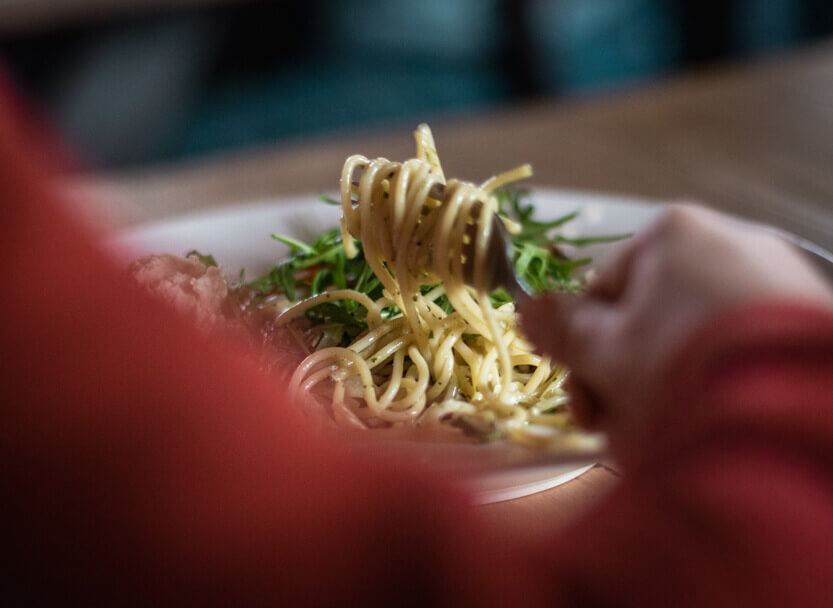
Other Attractions in Schleswig
Schleswig is only 45 km from the Danish-German border, making it an easy destination for a day trip. In addition, the town is close to other popular destinations in northern Germany, such as Sylt and Flensburg. Schleswig can therefore serve as a convenient base if you have a larger travel plan in the area.
All in all, Schleswig has a lot to offer: you can easily enjoy a small micro adventure and have a little adventure along the way. That’s exactly what we did, even on a cold and somewhat dark February day.
Enjoy your trip!














